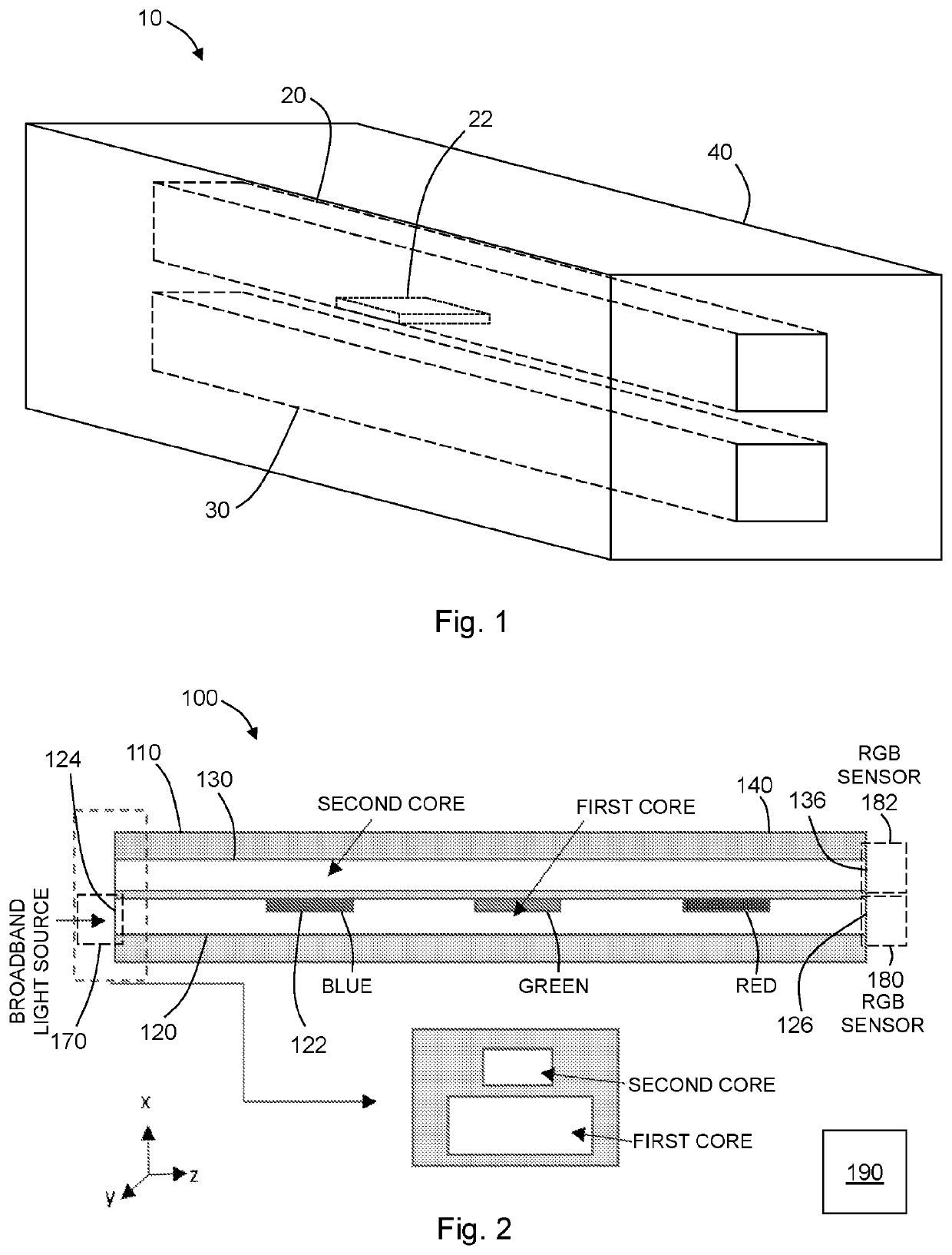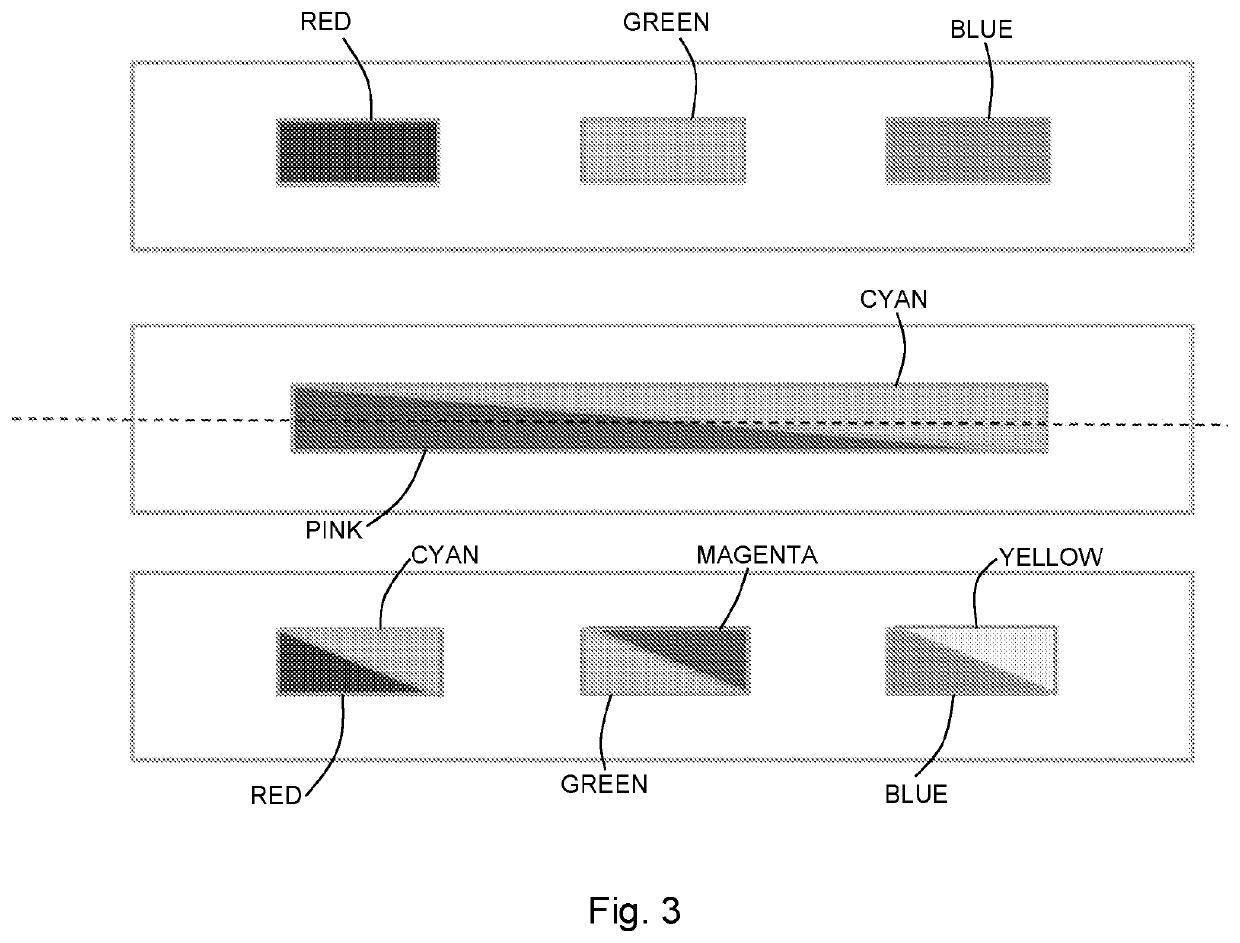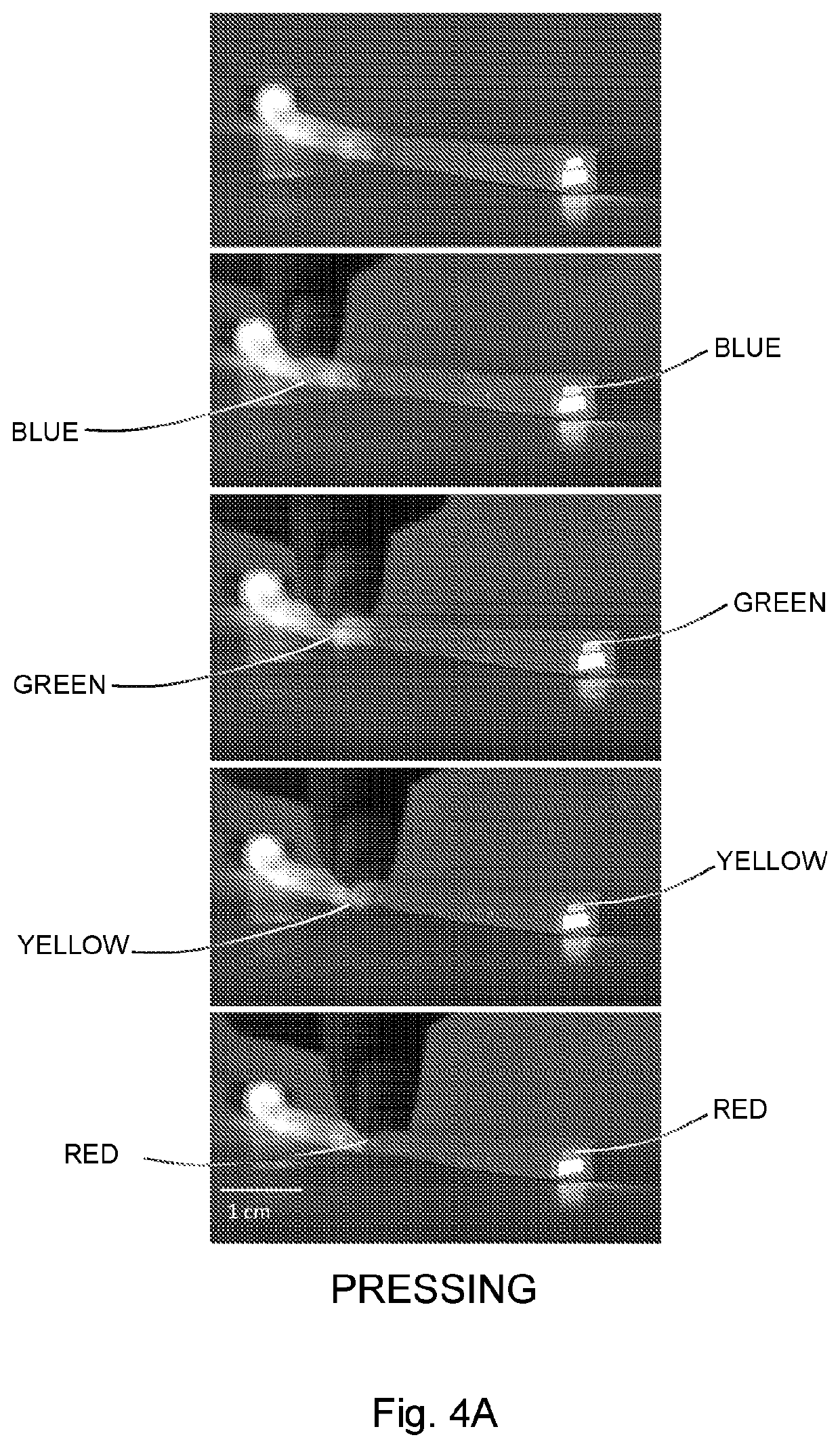Waveguide and sensor based on same
a waveguide and sensor technology, applied in the field of waveguides and sensors, can solve the problems of not being able to tell which type of deformation is applied, no way to tell the location of deformation along the waveguide, and no distributive sensing can be achieved with such stretchable waveguides. the effect of low cos
- Summary
- Abstract
- Description
- Claims
- Application Information
AI Technical Summary
Benefits of technology
Problems solved by technology
Method used
Image
Examples
example 1
de, comprising a first core having a first refractive index; a second core having a second refractive index, the second core being spaced apart from and parallel with the first core; a cladding surrounding the first core and the second core, the cladding having a refractive index lower than the first refractive index and the second refractive index, and wherein an interstitial portion of the cladding is located between the first core and the second core; and wherein a first region of the first core adjacent to the cladding or of the cladding adjacent to the first core is color dyed.
example 2
uide of Example 1, wherein the first color-dyed region is of the first core and adjacent to the interstitial cladding.
example 3
uide of any one of the preceding Examples, wherein the first color-dyed region extends over a cross-sectional area of the first core which is less than or equal to 50% of a cross-sectional area of the first core.
PUM
 Login to View More
Login to View More Abstract
Description
Claims
Application Information
 Login to View More
Login to View More - R&D
- Intellectual Property
- Life Sciences
- Materials
- Tech Scout
- Unparalleled Data Quality
- Higher Quality Content
- 60% Fewer Hallucinations
Browse by: Latest US Patents, China's latest patents, Technical Efficacy Thesaurus, Application Domain, Technology Topic, Popular Technical Reports.
© 2025 PatSnap. All rights reserved.Legal|Privacy policy|Modern Slavery Act Transparency Statement|Sitemap|About US| Contact US: help@patsnap.com



